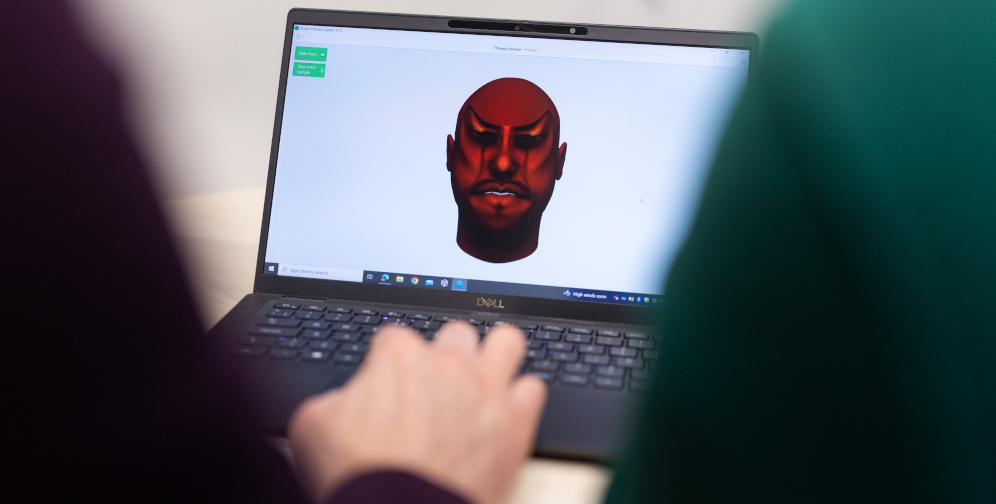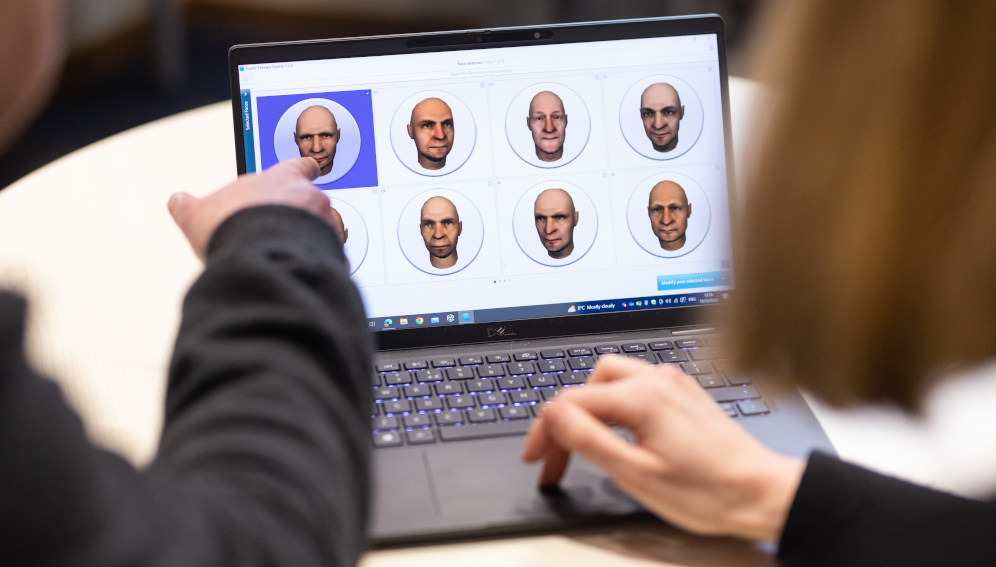A participant speaks face-to-face with an avatar in the trial of an AI-powered therapy for people who hear voices in their heads. Copyright: Jason Alden Photography Ltd / Wellcome. This image is intended for illustrative purposes only and does not depict an actual therapy session.
Mental health disorders affect almost a billion people worldwide, with the vast majority of them living in poor countries, according to the Global Alliance for Chronic Diseases, a funding organisation.
Yet most of them have little or no access to mental health facilities — the average number of mental health workers is 40 times higher in the European region than in the African region, according to the 2020 World Health Organization Mental Health Atlas.
The results of a clinical trial announced today (Monday) called Avatar 2 showed that talking avatars with the help of a therapist in a controlled setting can reduce distress for patients who hear voices in their heads — known as auditory hallucinations — according to the healthcare research foundation Wellcome, which funded the trial.
Yet avatar therapy requires a therapist to use voice changing software — posing a barrier to its use in countries with few therapists.
Advertisement
“This intervention has been developed in the United Kingdom,” Tom Ward, from King’s College London, who led the trial, told SciDev.Net during a call with reporters.
“It’s not a case that we could just go and transplant it to another culture and expect it to work the same — we need to do a very rigorous process of adaptation.”
Ward and his team are turning to artificial intelligence (AI) to simplify the use of avatar therapy, and are planning to test the new approach in Ethiopia and India as part of a follow up phase of the trial, named Avatar 3.
Advertisement
However, they are still recruiting local staff members, with initial results in at least three years, Ward said.
Adaptation
The challenge comes when trying to make mental health interventions happen in low- and middle-income countries, because there are such proportionally lower numbers of trained mental health workers compared with high-income countries, Sarah Kline, CEO of the non-profit United for Global Mental Health, told SciDev.Net.

One problem is that a lot of mental health solutions get developed in the rich countries and are then taken to low- and middle-income countries for testing or further refinement, which is not ideal, said Kline.
But — in the absence of a more equitable distribution of mental health funding — a proper adaptation of mental health solutions from high-income countries to lower-income countries is key.
Advertisement
That means, for example, figuring out whether there can be access to the same technologies that enable digital interventions, or to trained staff that can ensure that therapies can be used correctly, Kline said.
Ward and his team are planning a process of adaptation which will tailor the Avatar 3 trial’s workings to different cultural settings.
Next year they plan to conduct what he referred to as a theatre test, where the team will show the therapy to different people in the two countries and elicit opinions and challenges.
The ultimate goal is to adapt avatar therapy not only to other high-income countries but to lower resource settings as well, Ward said.
Advertisement
“We know that we have a powerful intervention here that delivers impact in people’s lives, and we want that to make a difference nationally, through the rollout, but also globally,” he added.
This piece was produced by SciDev.Net’s Global desk.
Advertisement
Views expressed by contributors are strictly personal and not of TheCable.
Add a comment









